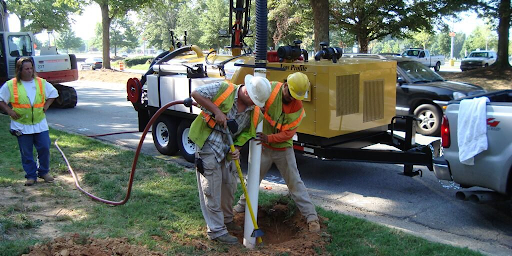Non-destructive digging has become a game-changer in the Australian construction and excavation industry. As the demand for precision and efficiency rises, more businesses turn to innovative solutions such as non-destructive digging to navigate this urban landscape. However, not everyone is familiar with the key aspects of non-destructive digging.
Keep reading this blog to get more familiar with non-destructive digging in Sydney and its applications.
What Is Non-Destructive Digging?
If you are searching for a reliable method to excavate without causing damage to the existing infrastructure, then non-destructive digging is the ultimate solution for your search. Moreover, this approach is particularly important in urban areas such as Sydney, where underground utilities, pipelines, and cables are prevalent. The process involves using advanced equipment to excavate soil and materials precisely while minimising the risk of damage. Sydney, being a city rich with a tapestry of underground utilities, has seen a huge surge in the demand for non-destructive digging services.
Non-destructive digging costs can vary depending on the scale of the project, the complexity of the excavation, and the specific requirements of the site. However, many companies find that the investment in non-destructive digging pays off in the long run due to the reduced risk of damage, increased efficiency, and lower repair costs associated with traditional excavation methods.
Comparison Of Environmental Impact Between Traditional And Non-Destructive Digging Methods
The construction and excavation industry is undergoing a paradigm shift towards environmentally conscious practices, with a particular focus on minimising the ecological footprint. Thus, to shed light on the implications of traditional and non-destructive digging methods, let’s compare them and know how they impact the environment.
1. Soil Disruption And Erosion:
Traditional Digging:
Excavation methods like open-cut trenching often lead to extensive soil disruption and erosion. This can result in the degradation of fertile topsoil, affecting local ecosystems and contributing to sedimentation in nearby water bodies.
Non-Destructive Digging:
Non-destructive digging methods, like HDD drilling, involve minimal soil disturbance. The precision of these digging techniques helps maintain soil structure, reducing the risk of erosion and preserving the integrity of the surrounding environment.
2. Energy Consumption And Emission:
Traditional Digging:
Heavy machinery used in traditional excavation processes typically requires significant amounts of energy, contributing to higher carbon emissions. The reliance on fossil fuels further exacerbates the environmental impact.
Non-Destructive Digging:
Non-destructive digging methods, which are more precise and often use advanced technologies, generally have lower energy requirements. This results in reduced carbon emissions, aligning with sustainable practices and minimising the ecological footprint.
3. Disposal Of Excavated Material:
Traditional Digging:
Large-scale excavation projects generate substantial amounts of excavated material, which may be challenging to dispose of responsibly. This can lead to increased pressure on landfill sites and potential soil contamination.
Non-Destructive Digging:
Non-destructive digging methods produce less excavated material due to their precision. Moreover, the material generated is often cleaner, facilitating easier and more environmentally friendly disposal or reuse.
What Is HDD Drilling?
Horizontal Directional Drilling (HDD) has become synonymous with non-destructive digging, especially in Sydney. HDD drilling allows contractors to create precise, controlled bores underground without disturbing the surface. This technique is invaluable when navigating through densely populated areas with intricate underground networks.
What Is The Role Of Directional Drilling Contractors?
For non-destructive digging, directional drilling contractors play a pivotal role. These specialised professionals are equipped with the knowledge and expertise to execute complex projects with precision. These professionals ensure that excavation projects are carried out seamlessly, minimising disruptions to the existing infrastructure and ensuring the safety of the surrounding environment.
How Does Underground Boring In Sydney Help?
Sydney’s underground infrastructure poses unique challenges, and underground boring has become a preferred method to tackle them. This technique helps create tunnels and bores beneath the surface without the need for disruptive excavation. As the city expands, underground boring in Sydney is becoming increasingly vital for projects that require minimal surface disturbance.
Conclusion:
Non-destructive digging, HDD drilling, and the expertise of directional drilling contractors are transforming the way excavation projects are undertaken in Sydney. As the city continues to evolve, these innovative methods are essential for maintaining the delicate balance between progress and preservation. Businesses and contractors alike are now recognising the long-term benefits of non-destructive digging, not only in terms of efficiency and precision but also in preserving Sydney’s intricate underground infrastructure.
Wondering if non-destructive digging is the right approach? Reach out to our professionals today at 0408335532 and discover the sustainable and efficient solutions that non-destructive digging can offer.






